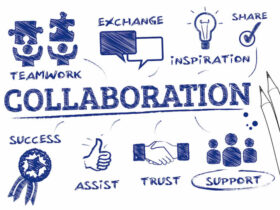In the nonprofit sector, collaboration is key to success. Nonprofit organizations often have similar missions and goals, but may differ in their areas of expertise or focus. By working together, nonprofits can pool their resources and better serve their communities. Here are five examples of successful nonprofit collaborations.
The American Red Cross and The Salvation Army
The American Red Cross and The Salvation Army are two of the most well-known nonprofit organizations in the world. Both organizations provide disaster relief, but they also collaborate on other initiatives, such as blood drives and holiday assistance programs. By working together, they can reach more people in need and provide a wider range of services.
Habitat for Humanity and Lowe’s
Habitat for Humanity is a nonprofit organization that builds homes for families in need. Lowe’s is a home improvement store that provides Habitat for Humanity with discounted building materials. In addition, Lowe’s employees often volunteer their time to help build Habitat homes. This partnership allows Habitat to provide more homes for families while also getting much-needed help from Lowe’s.
The Nature Conservancy and Microsoft
The Nature Conservancy is a nonprofit organization that works to protect the environment. Microsoft is a technology company that is committed to reducing its carbon footprint. Together, they have launched a project called the Microsoft Carbon Neutral Program. Microsoft offsets its carbon emissions by investing in projects that reduce greenhouse gases, such as reforestation. This partnership is helping to make Microsoft’s operations more environmentally friendly.
United Way and Verizon
United Way is a nonprofit organization that fights poverty and improves education and health. Verizon is a telecommunications company that provides United Way with financial support and employee volunteers. Verizon also offers discounted services to United Way’s partner agencies. This partnership allows United Way to reach more people and have a greater impact on communities across the country.
From Fundraising to Advocacy: Why Collaborating is Crucial for Nonprofits
When it comes to running a successful nonprofit organization, there are a lot of moving parts. From fundraising to advocacy, many different areas need to be managed for the nonprofit to function properly. One of the most important aspects of running a successful nonprofit is collaboration. Collaboration is key for nonprofits because it allows them to pool resources and ideas to better achieve their goals. When done correctly, collaboration can be a powerful tool for nonprofits. It can help them to expand their reach, tap into new markets, and achieve economies of scale. There are many different ways that nonprofits can collaborate. One common way is through partnerships. Partnerships between nonprofits can take many different forms, but they all involve two or more organizations working together to achieve a common goal. Another way that nonprofits can collaborate is by forming alliances. Alliances are similar to partnerships, but they tend to be more informal. Alliances usually involve nonprofits working together on a specific project or initiative.








